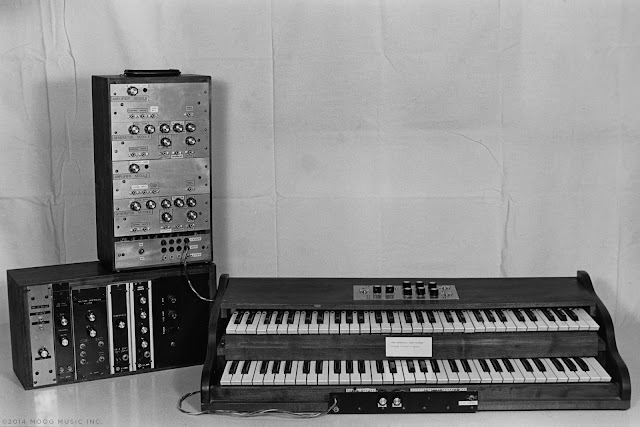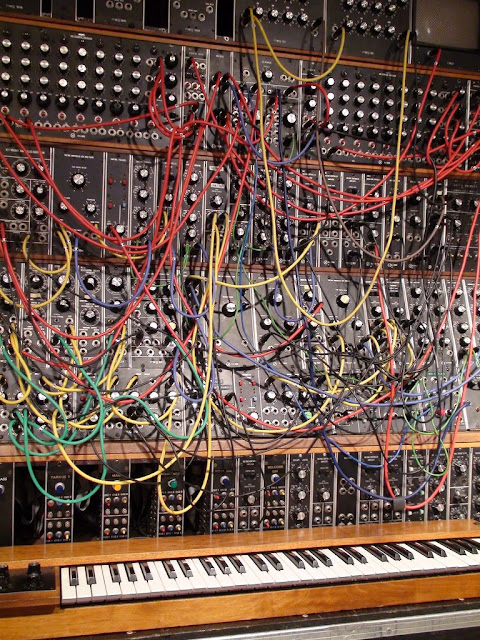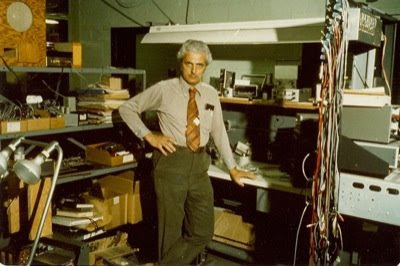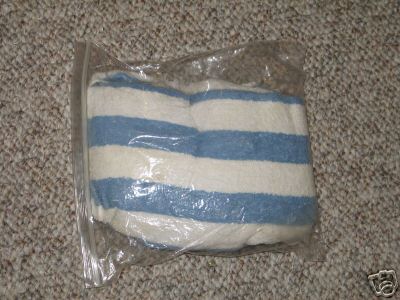Published on Oct 11, 2014 Moog Music Inc
"October 12, 2014 marks the 50 Year anniversary of the unveiling of the Moog modular synthesizer at the Audio Engineering Society's (AES) New York convention. On that day in 1964, Dr. Robert Moog introduced the world to a completely new type of instrument that would go on to change the course of music history and influence decades of future instrument design. Told by a Moog engineer, Moog Historian, and Bob Moog himself, this mini-documentary explores Moog Music's quest to resurrect the original methods, materials and designs used in the foundational modular synths. Through recreating Keith Emerson's modular system, Moog Music rediscovers the power, elegance, and enduring legacy of its first instruments.
Find out more at www.moogmusic.com"
 "Moog’s 1:1 Recreation of Keith Emerson’s Modular Synthesizer shown at AES ‘14
"Moog’s 1:1 Recreation of Keith Emerson’s Modular Synthesizer shown at AES ‘14Asheville, NC, October 11, 2014 — Tomorrow, October 12, 2014, marks the 50 Year anniversary of the unveiling of the Moog modular synthesizer at the Audio Engineering Society's (AES) New York convention. On that day in 1964, Dr. Robert Moog introduced the world to a completely new type of instrument that would go on to change the course of music history and influence decades of future instrument design.
The Moog modular synthesizer was comprised of individual electronic modules, housed in a wooden frame, and it made use of voltage-control as a new way of creating powerful sounds that had never been heard before.
After its debut at AES, the scientific-looking Moog modular instrument that made extraordinary new sounds with rapid alterations and exotic tonal colors, started to gain in popularity. Musicians began to establish the Moog system as the archetype of synthesis. One of the earliest and most famous artists to adopt the new instrument was Keith Emerson, keyboardist for the innovative band Emerson Lake and Palmer. Touring the world for over forty years with this unique instrument, Emerson has made his Moog modular system the most recognizable synthesizer of all time.
The 50th Anniversary of the Moog Modular is a historical landmark for musical instrument design and popular music. In celebration of this momentous occasion, Moog Music has faithfully and painstakingly recreated Keith Emerson’s Moog modular. This new Emerson Moog Modular System (EMMS) utilizes original design material and parts to duplicate each facet of Mr. Emerson’s custom instrument down to the smallest detail. The modules in the EMMS are built exactly as the originals were in the Moog Factory in Trumansburg, NY in the 1960s: by hand-stuffing and hand-soldering components to circuit boards, and using traditional wiring methods. Today, Moog also released a mini-documentary featuring a Moog engineer, a Moog Historian, and Bob Moog himself, that explores Moog Music's quest to resurrect the original methods, materials and designs used in the foundational modular synths.
"It's a dream come true for us to bring back these instruments that our company is so known for, and to make them visually and sonically perfect. It's even more perfect that exactly 50 years after the first Moog synth was shown to the public, people can come to AES 2014 and experience the new Emerson Moog Modular System," said Brian Kehew, Moog’s Historian.
This towering recreation of the world's most recognizable synthesizer will be on display in Moog booth 1028 at the 137th AES convention in Los Angeles, CA through Sunday 10/12/14. It is the first time the Emerson Moog Modular System has been shown to the public since it’s unveiling at Moogfest 2014.
Of the 5 Emerson Moog Modular Systems Moog will build, only 1 remains available for sale. The price is $150,000 USD. To inquire about purchasing the last remaining Emerson Moog Modular System, contact Steve Maass at Moog Music. 828.251.0090 ext. 205 or email steve.m@moogmusic.com. Serious buyers only please."


















































































